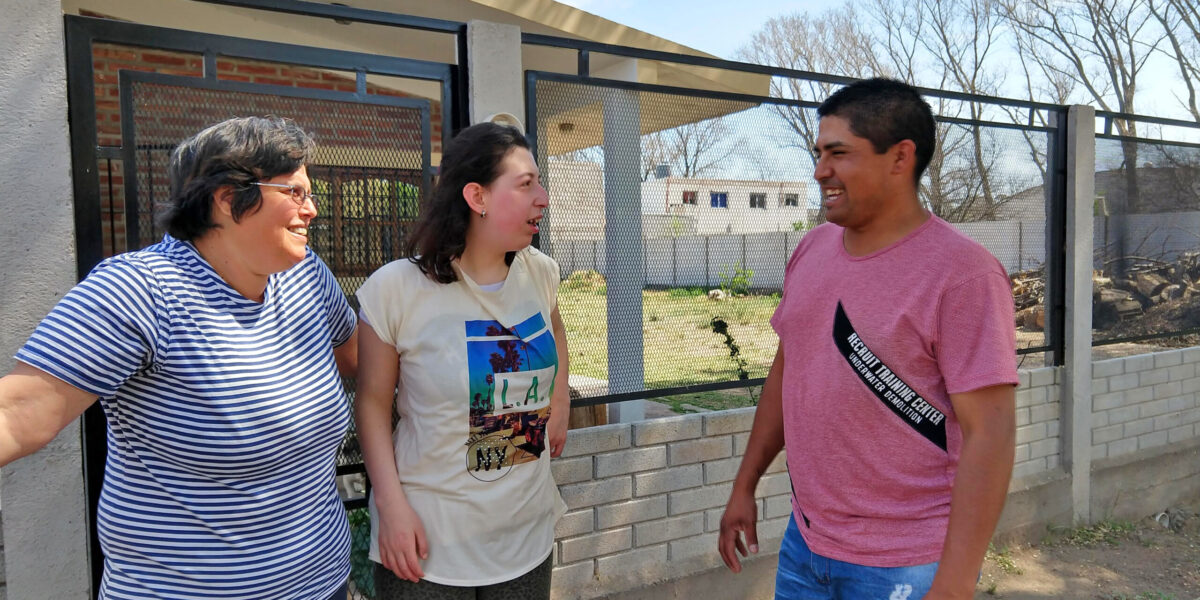Since the Iglesia Evangélica Menonita Argentina (Argentina Evangelical Mennonite Church) celebrated the 100th anniversary of its first baptisms on Sept. 27–29, its commitment to spreading the good news of Christ has grown stronger. During the festivities, church members and visiting North American partners reviewed the denomination’s history: from the first Mennonite missionaries, Mae and Tobias Kreider (T. K.) Hershey as well as Emma and Joseph Wenger (J. W.) Shank and their families, to the current work of its mission programs.
The early missionaries were sent by Mennonite Board of Missions, a predecessor agency of Mennonite Mission Network. By the mid-20th century, the Argentina Mennonite Church was taking responsibility for church planting, and by the mid-1990s, regional mission programs began forming.
In the historic central Argentine region of the church, pastors organized Visión Evangelística y Misionera de la Región Central (VEMCE, formerly known as VEMZO). Their vision was to plant new churches and reestablish others that had been planted but that didn’t mature into stable congregations.
"The significance of the centennial is the celebration of the dream achieved by those who, ‘leaving everything,’ came to bring us the good news. They did not ‘look at it from afar,’ but believing in God’s faithfulness, they came," said Sara Buhlmann, a retired gynecologist and current church planter with VEMCE.
While most VEMCE church plants are geographically close to existing congregations, the church in Carlos Casares sent workers six hours west to Villa Mercedes, San Luis, with the vision to plant both a business and a church.
Currently, Beraca Premoldeados, a creative block-making and construction business, provides income for the church planters and creates jobs for people in the community. VEMCE anticipates partnering with Argentine businesspeople with a heart for mission moving into the next century, combining income-generating work with church planting in cities beyond their current locations.
In the mid-1940s, missionaries felt called to branch out beyond central Argentina to the indigenous people of the Chaco province. Through the decades, many North American missionaries served on the Mennonite team in the Chaco. By 2005, the team included a German family and three Argentine families. One of the Argentine families, Alfonsina and José Oyanguren, have led this ministry together with Toba Qom partners since 2011.
They work with indigenous leaders to support the use of the Toba Qom language through Bible ministries in the churches and at the Centro Educativo Say˜aten (Qom Knowledge Educational Center). The Center hosts a recording studio and FM radio station, as well as multiple educational opportunities, including the Castelli Bible Institute and a program for high school completion. After graduating, students can continue their education to become bilingual teachers in a program that indigenous leaders and the Oyangurens also support.
Germán Díaz, a Toba Qom leader who works closely with Alfonsina and José, explained, "We continue to talk with students about studying and then coming back to participate with and for their people. We are trying to help them understand their history so their studies will help their people."
"The challenge for the next century is the same," Buhlmann said, "to carry the message ‘to every creature,’ with technological advances, yet not forgetting the model of Jesus, that the most important thing is ‘person-to-person’ communication."








